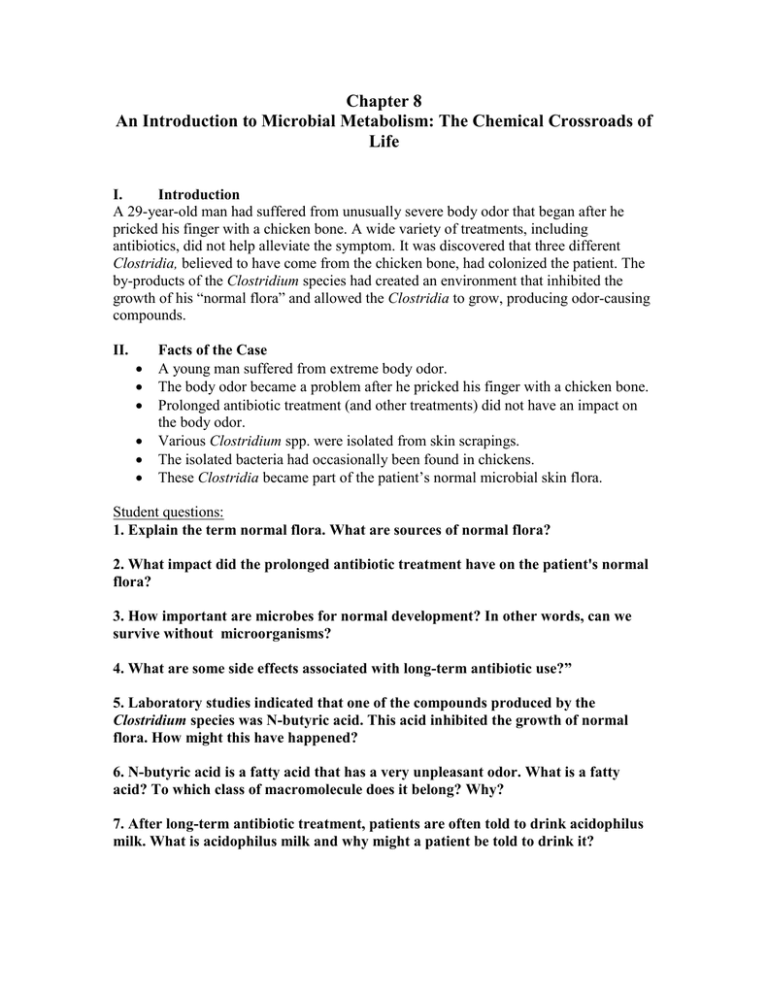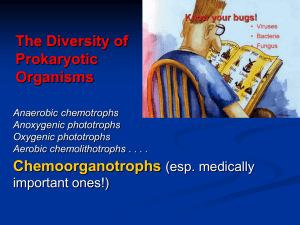chapter 8 case study.doc
advertisement

Chapter 8 An Introduction to Microbial Metabolism: The Chemical Crossroads of Life I. Introduction A 29-year-old man had suffered from unusually severe body odor that began after he pricked his finger with a chicken bone. A wide variety of treatments, including antibiotics, did not help alleviate the symptom. It was discovered that three different Clostridia, believed to have come from the chicken bone, had colonized the patient. The by-products of the Clostridium species had created an environment that inhibited the growth of his “normal flora” and allowed the Clostridia to grow, producing odor-causing compounds. II. Facts of the Case A young man suffered from extreme body odor. The body odor became a problem after he pricked his finger with a chicken bone. Prolonged antibiotic treatment (and other treatments) did not have an impact on the body odor. Various Clostridium spp. were isolated from skin scrapings. The isolated bacteria had occasionally been found in chickens. These Clostridia became part of the patient’s normal microbial skin flora. Student questions: 1. Explain the term normal flora. What are sources of normal flora? 2. What impact did the prolonged antibiotic treatment have on the patient's normal flora? 3. How important are microbes for normal development? In other words, can we survive without microorganisms? 4. What are some side effects associated with long-term antibiotic use?” 5. Laboratory studies indicated that one of the compounds produced by the Clostridium species was N-butyric acid. This acid inhibited the growth of normal flora. How might this have happened? 6. N-butyric acid is a fatty acid that has a very unpleasant odor. What is a fatty acid? To which class of macromolecule does it belong? Why? 7. After long-term antibiotic treatment, patients are often told to drink acidophilus milk. What is acidophilus milk and why might a patient be told to drink it?
